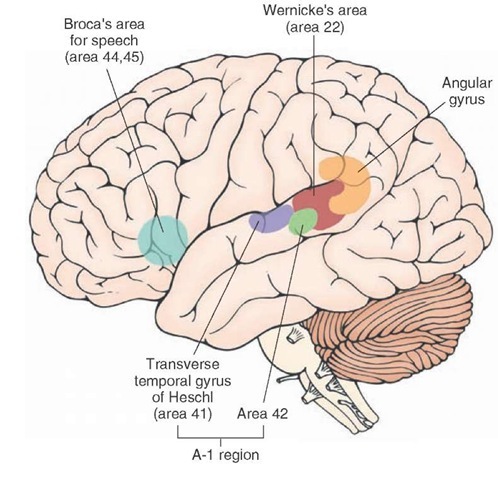

In the current study, we examined further whether the normally distributed temporal patterns of sound inputs are required for the development of neuronal frequency-response selectivity and of orderly “tonotopic” maps in rat AI. In those studies, the spectral structures of early acoustic environments were demonstrated to have stimulus-specific impacts on the cortical representation of tonal frequencies. Recently, a correlation between the orderly cortical representation of sound frequencies in the rat AI and the distribution of the frequency power spectrum of environmental sounds to which rat pups have been exposed has been suggested ( 32, 33). Rewiring visual inputs into the AI induces the formation of point-to-point, retinotopic representational topography and visual orientation modules within this field ( 29– 31). Correlation between the development of speech-reception abilities and early language-specific speech exposure has been well documented ( 26– 28). Rearing mice in an acoustic environment with click stimuli resulted in reduced frequency tuning of neurons documented at the level of inferior colliculus ( 24, 25). An important shaping role of the temporal patterns of competitive acoustic inputs on the establishment of structural organization and neural processing capabilities in the central auditory system and in AI has been indicated by previous studies.

However, in the primary auditory cortex (AI), where neurons exhibit tonal frequency selectivity and are organized into “tonotopic maps” ( 18– 21), it remains largely unknown whether and how the temporal structures of neuronal activity that are evoked by patterned acoustic inputs during the early postnatal development will affect the formation of a feature-selective, organizational cortical structure ( 22, 23). These modifications theoretically can lead to the formation of the cortical feature-selective structures by “decoding,” through synaptic strength changes, the temporal information within neuronal activities ( 16, 17). In addition, in various developing systems, spike timing-dependent synaptic plasticity has been characterized recently ( 13– 15). Synchronous activation of the optic nerves results in an impairment of the development of orientation selectivity in the primary visual cortex ( 10), it blocks normal topographic map refinement in the goldfish ( 11), and it blocks binocular map formation in frogs ( 12). Wave-like, correlated neuronal activity patterns have been recorded along the visual pathway ( 8), and the blockade of spontaneous waves in the retina results in abnormally segregated, eye-specific layers in the lateral geniculate nucleus ( 9). Rearing kittens with squint (strabismus) leads to striking changes in the binocular-response properties of striate cortex neurons ( 6, 7). The correlations between the spatiotemporal structures of sensory inputs and the development of cortical feature-selective organizations have been examined predominantly in the visual system ( 4, 5). Spontaneously generated and/or externally driven neuronal activity is believed to play an instructive role in sculpting the intricate circuits of the developing nervous system from initially more imprecise neuronal connections ( 1– 3). Thus, patterned auditory inputs appear to play a crucial role in shaping neuronal processing/decoding circuits in the primary auditory cortex during a critical period. In contrast, noise exposure of rats older than P30 did not cause significant change of auditory cortical maps. In addition, paradoxically weaker than normal temporal correlations between the discharges of nearby AI neurons were recorded in exposed rats. These effects correlated with the severe impairment of normal, developmental sharpening, and refinement of receptive fields and tonotopicity. The latter was manifested by broader-than-normal tuning curves, multipeaks, and discontinuous, tone-evoked responses within AI-receptive fields. Introduction of synchronous inputs into the auditory pathway achieved by exposing rat pups to pulsed white noise at a moderate intensity during P9–P28 resulted in a disrupted tonotopicity and degraded frequency-response selectivity for neurons in the adult AI. In the primary auditory cortex (AI), the development of tone frequency selectivity and tonotopic organization is influenced by patterns of neural activity.


 0 kommentar(er)
0 kommentar(er)
